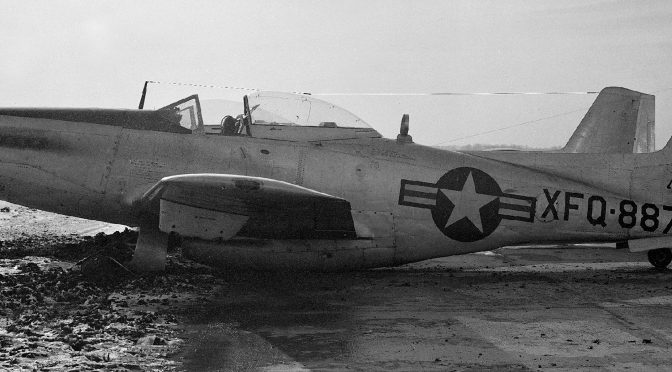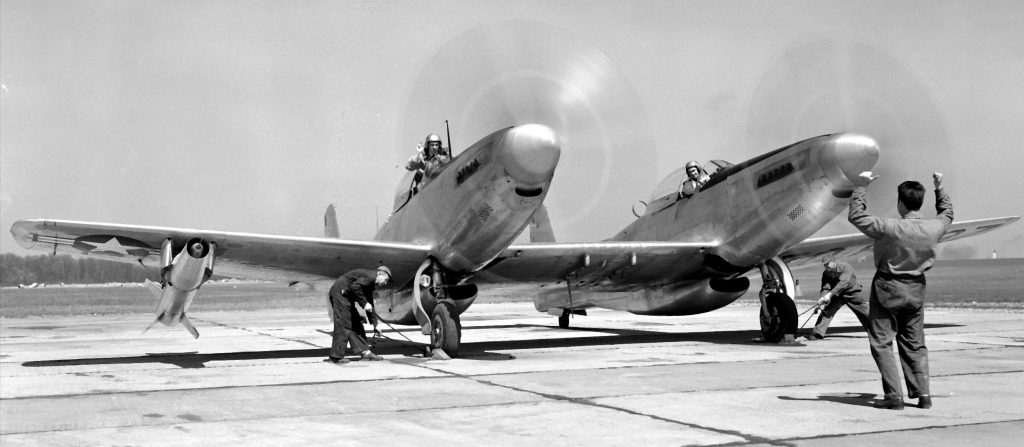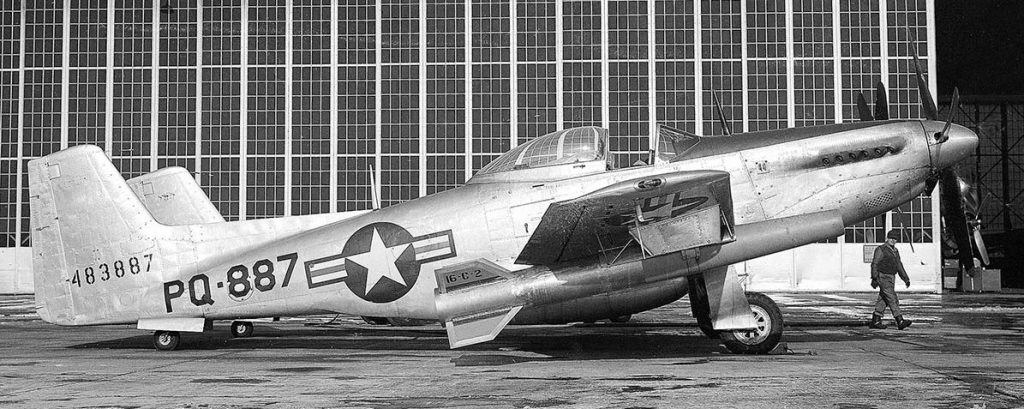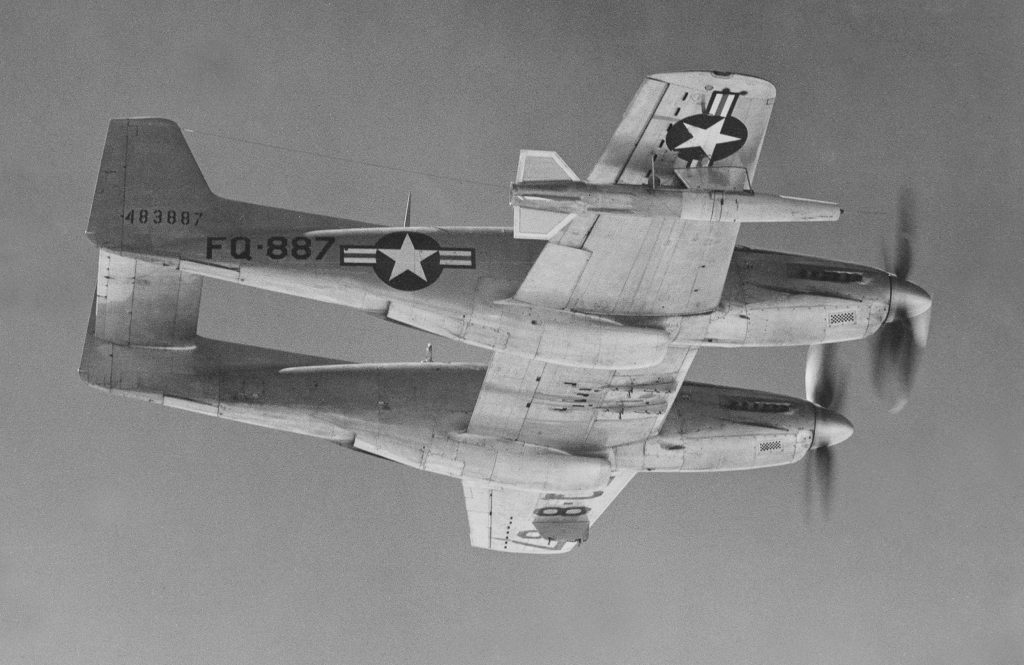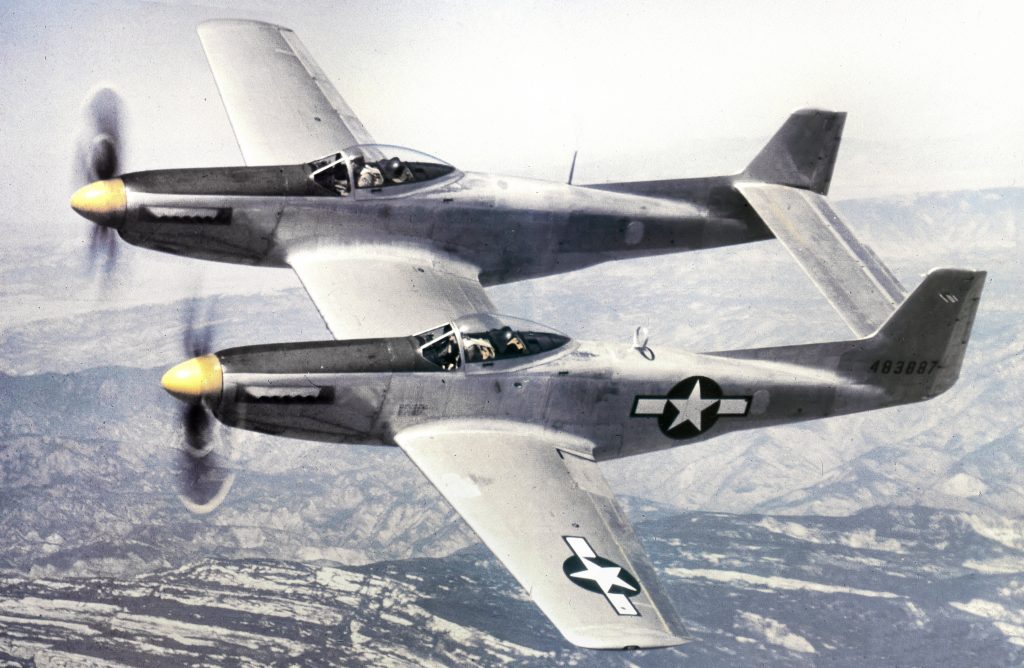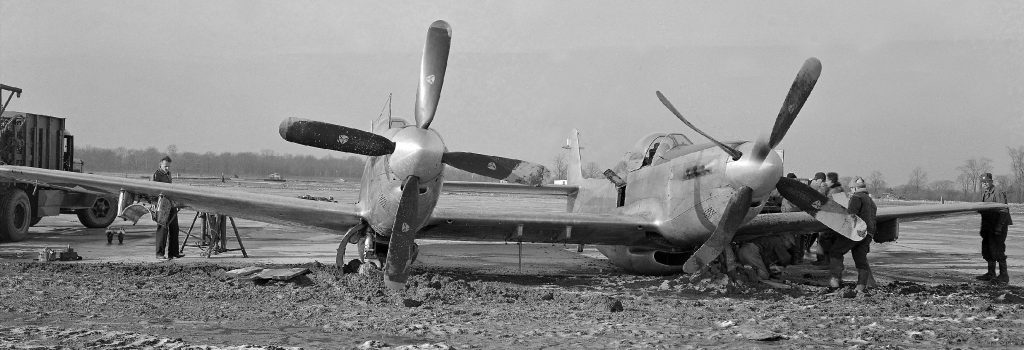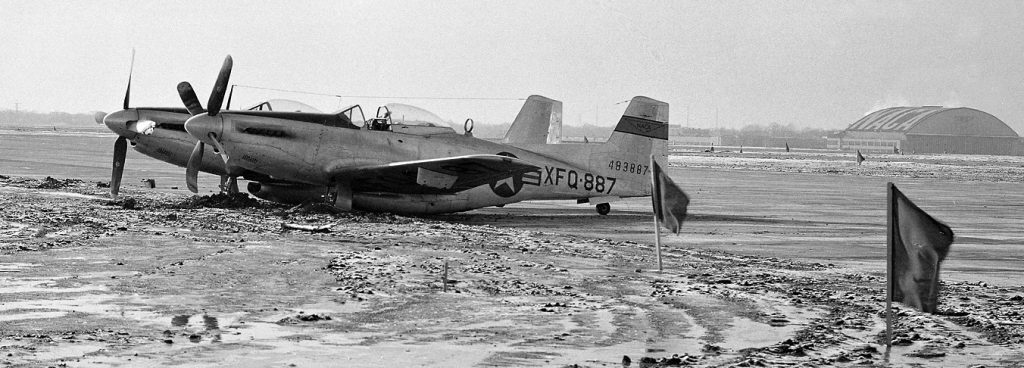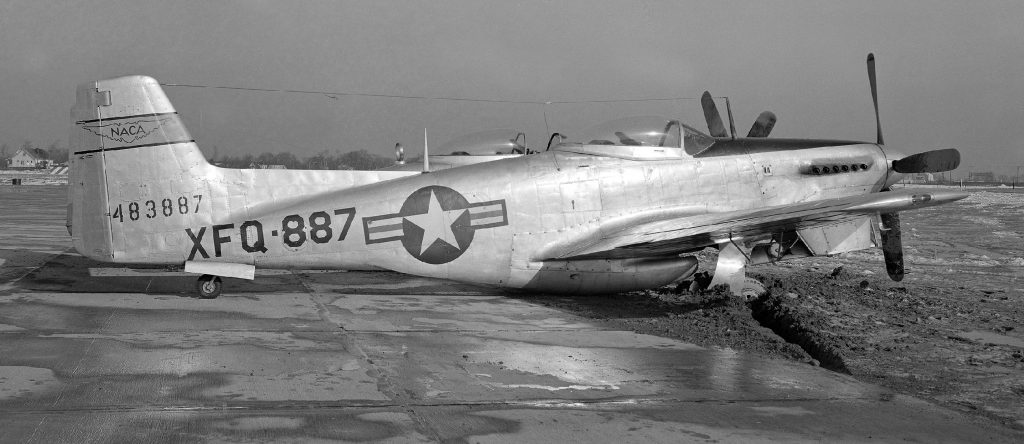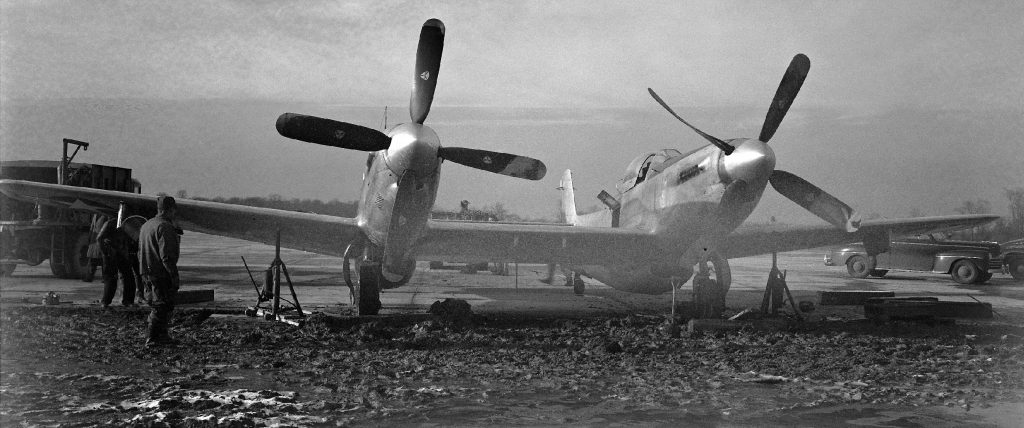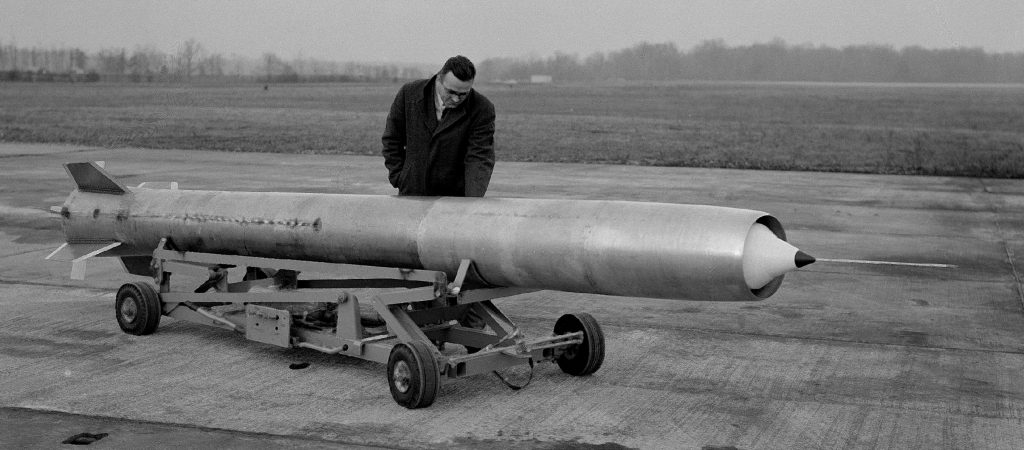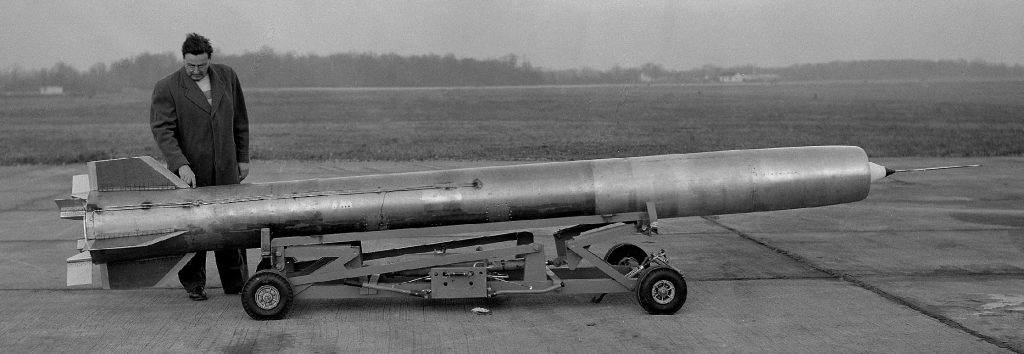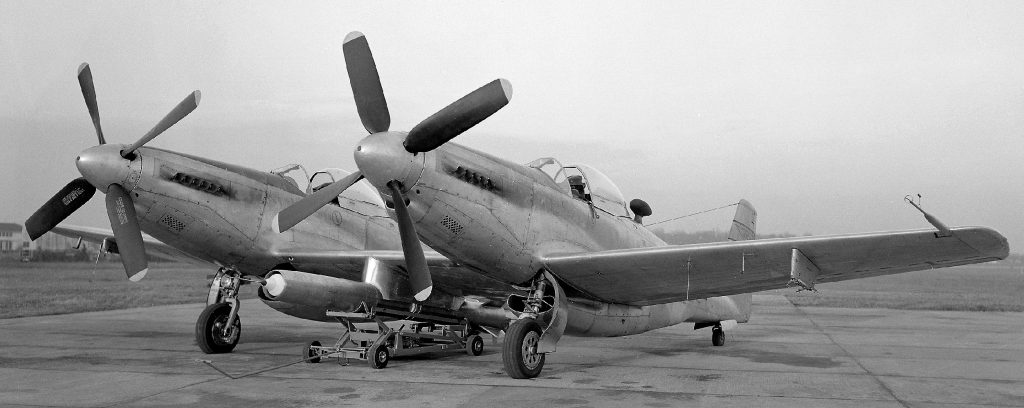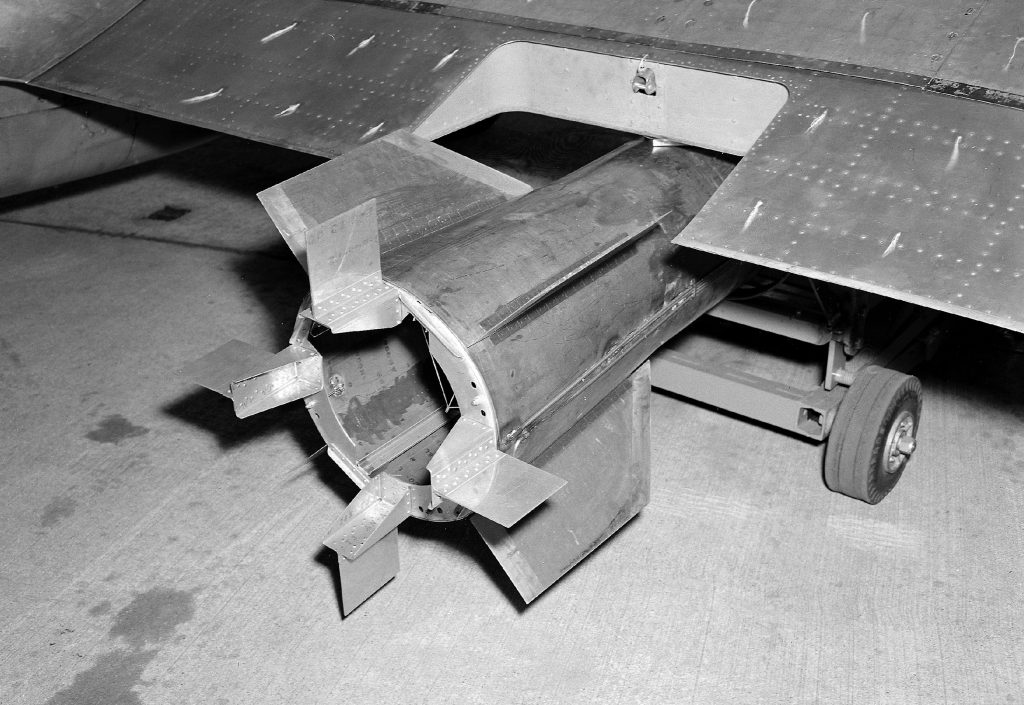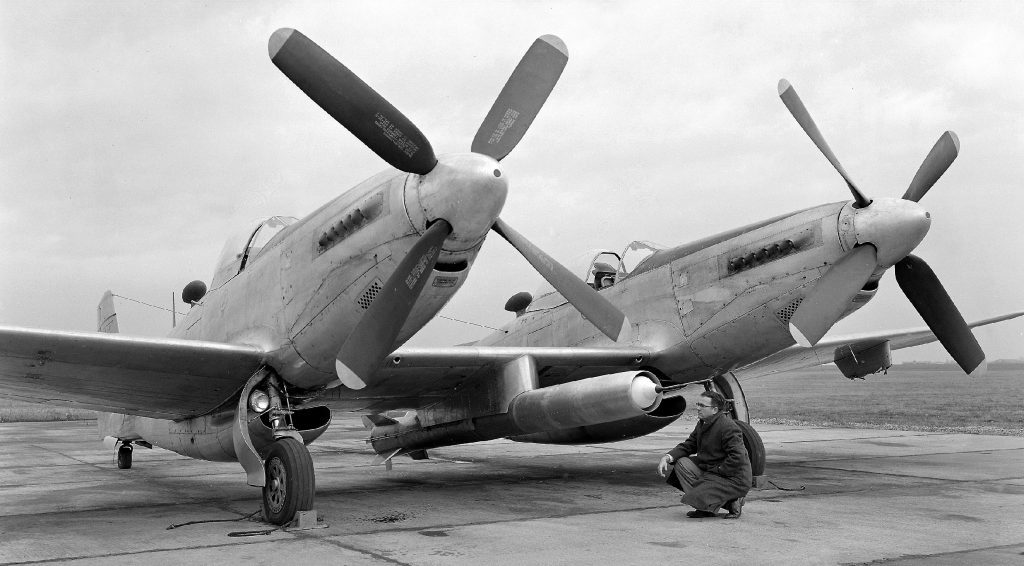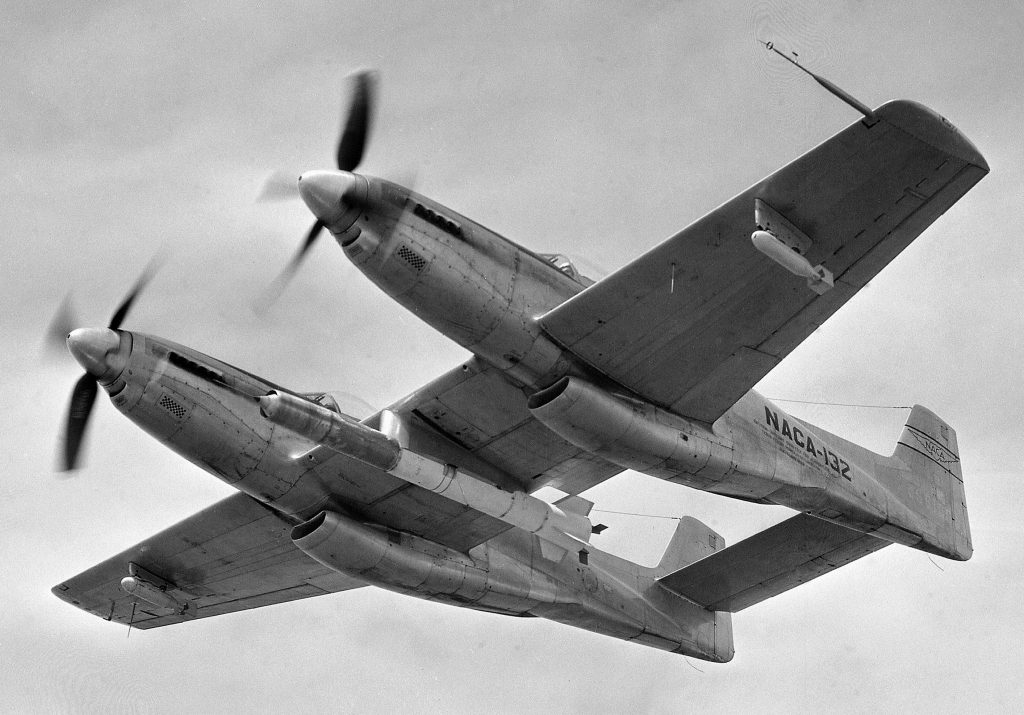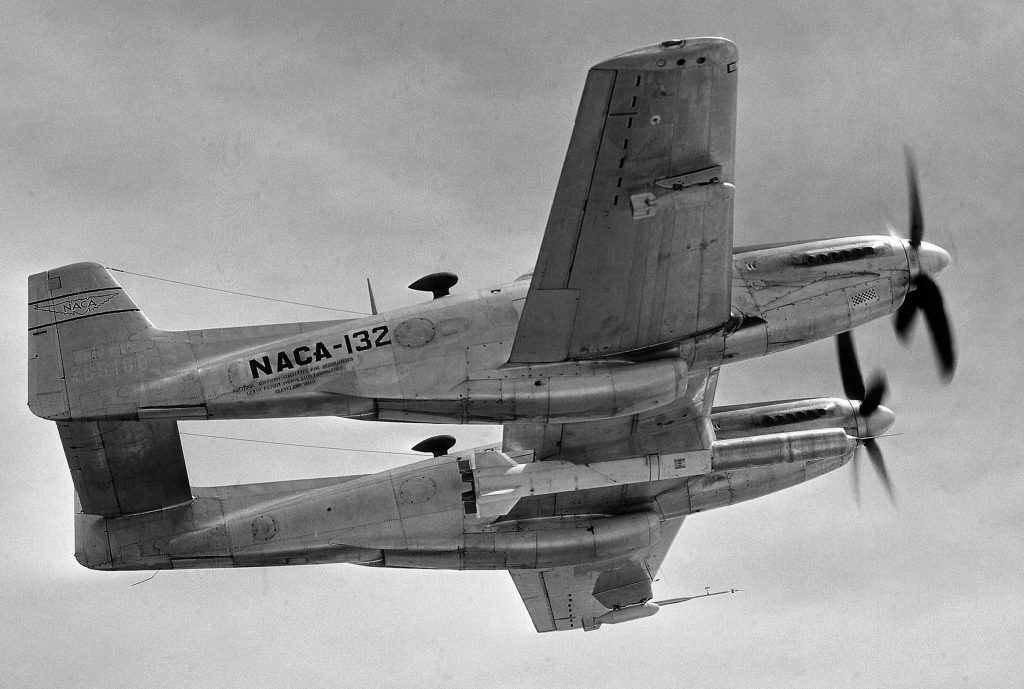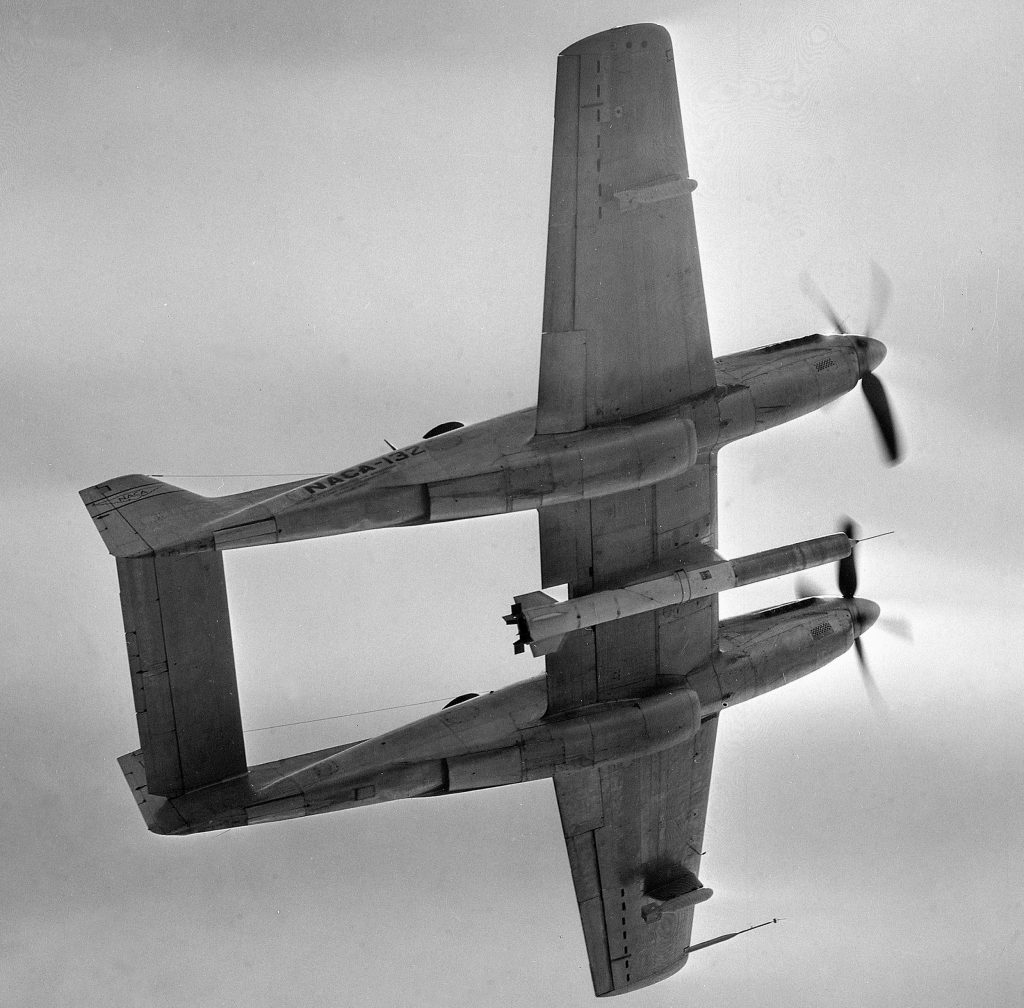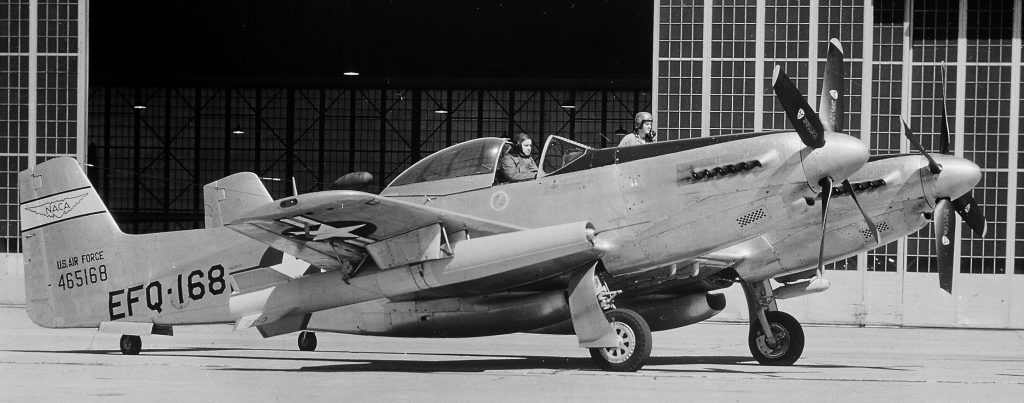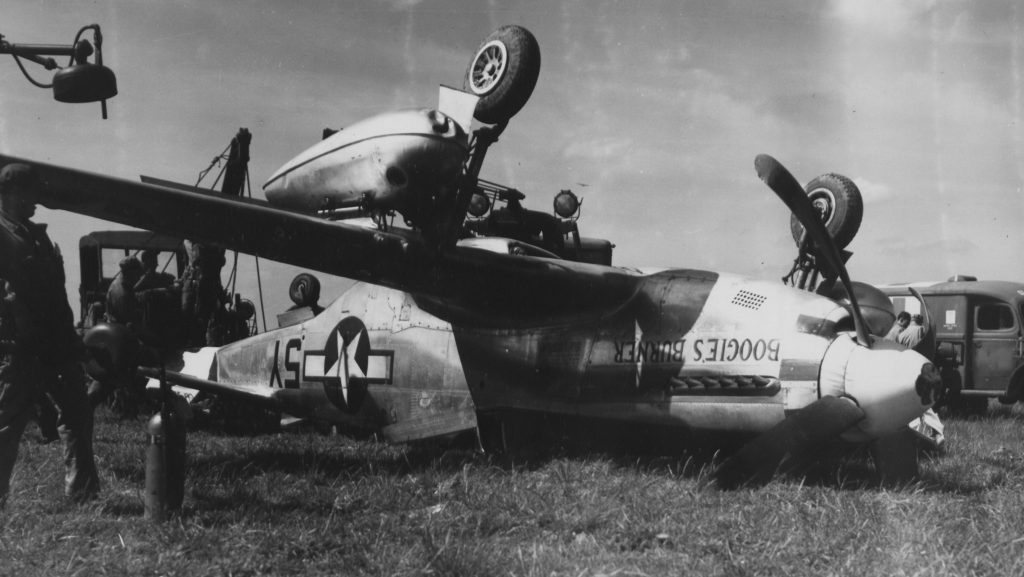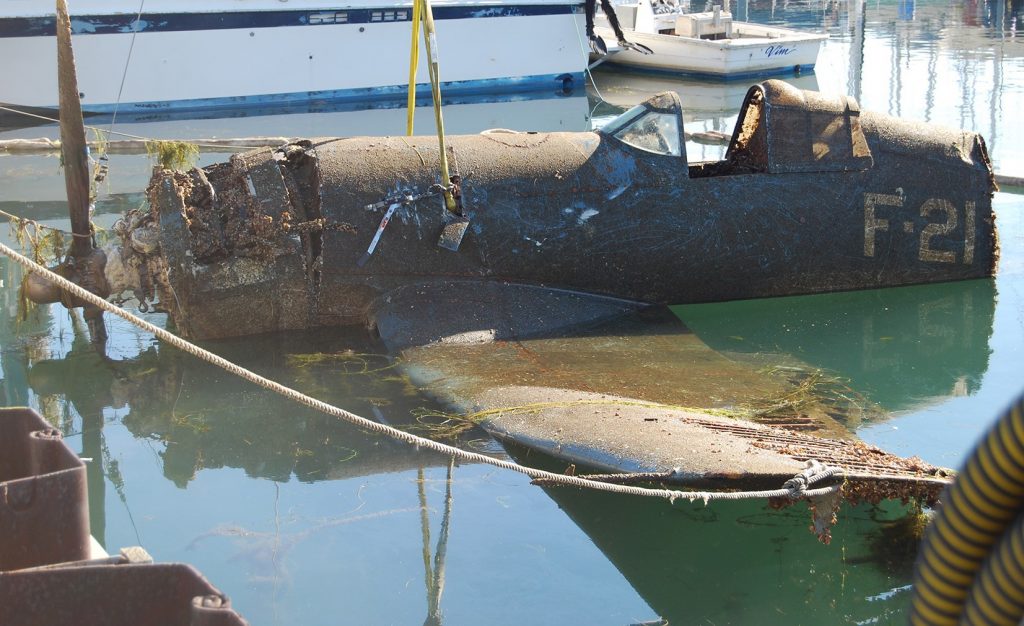National Advisory Committee for Aeronautics (NACA) acquired three F-82E (P-82E) Twin Mustangs between 1947 and 1950.
The first F-82E (PQ-887) was used to test ramjet missiles over NACA Lewis Flight Propulsion Laboratory (now called NASA Glenn Research Center).
With the creation of the U.S. Air Force in September 1947, the ‘P’ for pursuit was dropped for ‘F’ for fighter, and PQ-887 became FQ-887.
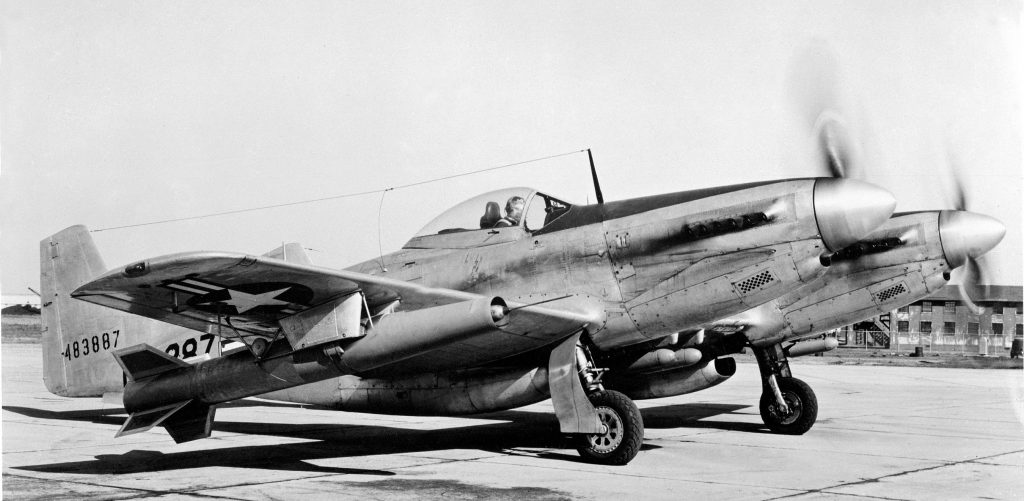
The info that came with this photo says the ramjet tests took place over Wallops Island (Wallops Flight Facility), Virginia. NACA photo, 1948.
A 28MAY1951 Aviation Week article revealed the once secret Wallops Island operations, but stated that the ramjet craft were scale models of bigger things to come.
By April 1949, FQ-887 became XFQ-887, and a NACA press release claimed the ‘X’ represented that this F-82E was actually one of the two North American prototype XP-82s (#44-83887)!
XFQ-887 then suffered a ‘runway incident’ in December 1949 and was ‘transferred’ after that.
In 1950 two more F-82E came onboard. By the end of 1951, a new designed F-4 ramjet missile was tried-out.
The new F-4 ramjet missile was mounted in the center of the aircraft, instead of on the outboard wings.
Compare to wing mounted ramjet missile.
Interestingly, these air-launched ramjet missiles look like the successful surface-to-air RIM-8 Talos missile used by the U.S. Navy, but with much fewer fins. The Talos ramjet project began in 1944, with its first flight in February 1945.
https://www.facebook.com/169791783063916/videos/1815465248496553/
See and read a whole lot more about the return of XFQ-887 (XP-82) at XP-82 Twin Mustang Project.
Crash Landings:
USAAF P-51 MUSTANGS, ENGLAND, 1944-45
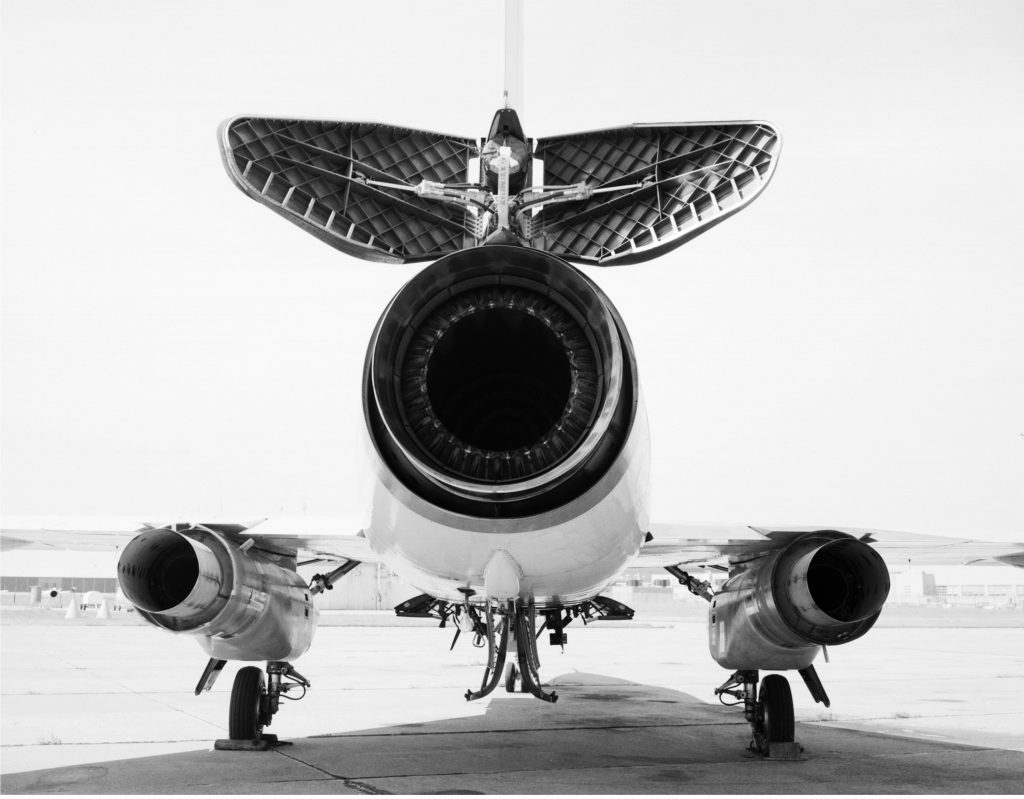 TRIPLE ENGINED F-106B DELTA DART; MORE TAXPAYER FUNDED SUPPORT FOR THE AIRLINER INDUSTRY
TRIPLE ENGINED F-106B DELTA DART; MORE TAXPAYER FUNDED SUPPORT FOR THE AIRLINER INDUSTRY
